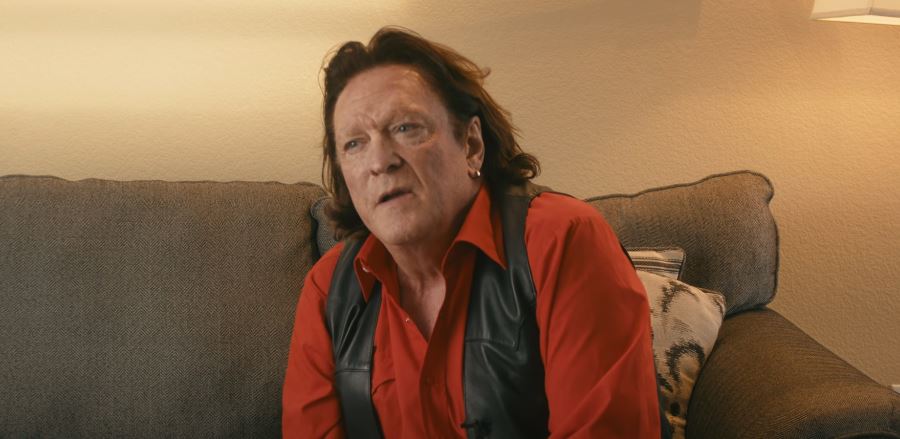Michael Madsen’s 2025 net worth provided a nuanced view of a career that included over 400 acting credits, over 40 years of experience, and artistic forays into poetry and photography. Despite appearing in some of Hollywood’s most well-known movies, such as Reservoir Dogs and Kill Bill, he died with an estimated estate of between $500,000 and $4 million, which many found surprising considering the scope of his body of work.
Born and raised in Chicago, Madsen began his career as an apprentice to John Malkovich at the prestigious Steppenwolf Theatre, not on camera. His captivating yet erratic on-screen persona was greatly influenced by this early experience. He had already established a reputation for playing emotionally complex, hardened characters by the early 1990s, most notably in Quentin Tarantino’s breakthrough film Reservoir Dogs and Thelma & Louise, where his portrayal of Mr. Blonde is still regarded as one of the most memorable and eerie roles in the genre.
Michael Madsen Bio & Net Worth (2025)
| Attribute | Details |
|---|---|
| Full Name | Michael Søren Madsen |
| Date of Birth | September 25, 1957 |
| Date of Death | July 3, 2025 |
| Age at Death | 67 |
| Birthplace | Chicago, Illinois, USA |
| Profession | Actor, Poet, Photographer |
| Notable Roles | Mr. Blonde (Reservoir Dogs), Budd (Kill Bill), Donnie Brasco |
| Career Span | 1982 – 2025 |
| Estimated Net Worth | Between $500,000 and $4 million (at time of death) |
| Family Connections | Sister Virginia Madsen, Son Christian Madsen |
Madsen starred in a wide variety of movies over the ensuing decades, ranging from family-friendly dramas like Free Willy to cult crime thrillers. In Hollywood, he starred in ensemble casts like Once Upon a Time and The Hateful Eight, sparred with Uma Thurman in Kill Bill, and played with Al Pacino and Johnny Depp in Donnie Brasco. Even with modest budgets and grim scripts, he was in great demand because of his unique ability to transition from villain to tragic anti-hero.
However, Madsen’s financial trajectory was noticeably rocky in spite of his prolific output. He declared bankruptcy in 2009, claiming that his monthly income was only $3,300. He was one of California’s most well-known delinquents due to his nearly $1 million debt to Quentin Tarantino, $25,000 to Pierce Brosnan, and accumulated unpaid taxes. His IRS debt alone reached $640,000 at one point. He took on a number of independent film projects, some of which were well received and others of which were forgettable, but he worked tirelessly to rebuild his finances and almost always finished them with the intention of staying solvent.
Madsen showed a very flexible approach to making money through voice acting in games like Grand Theft Auto III, low-budget thrillers, and well-timed appearances at fan conventions. Despite being small in comparison to studio blockbusters, the acting fees gave him a consistent stream of income that kept him afloat during his weaker years.
His poetic pursuits gave his legacy a completely new dimension. Madsen did more than just act; he wrote with unexpected openness, frequently referencing his inner turmoil and personal hardships. Fans who looked past the tough exterior and into the vulnerable soul behind the roles were drawn to his collections, such as Burning in Paradise and American Badass. His poetic voice, which was softer, more introspective, and more emotionally raw than his on-screen personas, was influenced by Charles Bukowski and Jack Kerouac. In the months before his death, he was editing his last book, Tears for My Father.
Madsen established a creative realm that few actors in his genre ventured into by utilizing his gritty public persona to tell personal stories. His photography book Signs of Life also demonstrated that his skill went beyond words to tell stories visually, capturing moments of Americana with eerie resemblance.
Michael continued to be active with new film projects in his later years. As evidence of his continuing creative spark, his managers pointed out that he was actively working on Southern Housewives features like Cookbook and Resurrection Road. Additionally, there was discussion about him going back to theater, which felt especially symbolic because it echoed the early stages of his artistic development.
Perhaps Madsen’s story is most compelling because of the quiet strength that lies beneath his volatility. He never publicly lamented the financial strains or turned resentful when his notoriety failed to translate into long-term prosperity. Instead, he continued to write, record, and film, frequently taking on projects that others might have turned down because he believed it was important to remain visible and active.
A chapter that was still being written came to an end when he died in Malibu at the age of 67, apparently from cardiac arrest. Fans were left in mourning for a man who was not only an actor but also a survivor—a man whose mistakes were made in public but whose will to keep making art remained incredibly human. His unfinished book might provide a last glimpse into the emotional terrain of an outsider in Hollywood who discovered his own rhythm, no matter how unusual, in the months to come.

